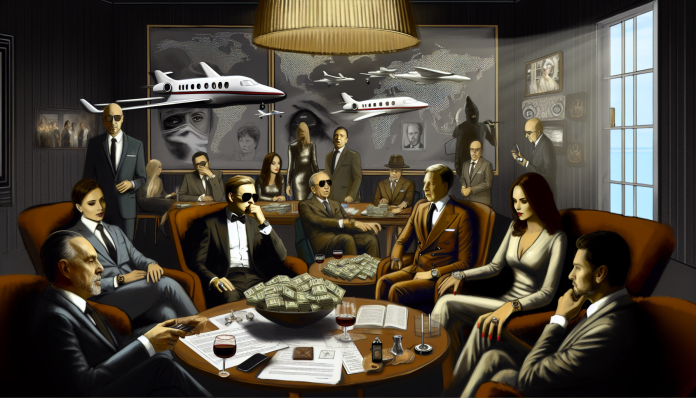The Playboy Presidents: World Leaders and Their Hidden Mistresses
Introduction
Throughout history, the intersection of politics and personal lives has often ignited scandalous intrigue, particularly when those at the center of it are world leaders. One of the most notable examples in the modern era revolves around U.S. President Bill Clinton and his affair with White House intern Monica Lewinsky during the late 1990s. This scandal not only redefined the limits of political propriety but also showcased the shifting societal attitudes toward infidelity and sexual conduct among public figures.
In the 1990s, America was characterized by a culture that daily grappled with the residue of the sexual revolution, yet still clung to residual puritanical views about monogamy and morality. As the scandal unfolded, these tensions would boil over, reshaping the political landscape and influencing societal norms for years to come.
The Scandal
The Bill Clinton-Monica Lewinsky affair began in 1995 when Lewinsky, a 22-year-old intern, was introduced to Clinton during her internship in the Oval Office. Reports detail that the two engaged in a sexual relationship that continued off and on until 1997. The affair, as it would be revealed, included encounters in various locations within the White House—one infamous scenario involved Clinton allegedly receiving oral sex from Lewinsky in the Presidential bedroom.
The scandal came to light in January 1998, when news of their relationship broke. It escalated further when Clinton famously declared, “I did not have sexual relations with that woman,” during a televised address. However, this denial came back to haunt him as evidence mounted, including a now-iconic dress that bore Clinton’s DNA, leading to an impeachment trial in 1998 for perjury and obstruction of justice. The ensuing legal battles captivated the nation, garnering extensive media coverage that would reshape public discourse on sex and power.
Moral and Cultural Analysis
The reaction to the scandal was divided along partisan lines, with critics arguing that it proved Clinton’s lack of moral integrity, while supporters maintained that his personal life should not interfere with his political capabilities. Conservative figures like Ken Starr, who led the investigation, painted Clinton as deceitful and untrustworthy, while many Americans empathized with the youthful Lewinsky, portraying her as a victim caught up in a political maelstrom.
The consequences for Clinton were profound; although he was acquitted of impeachment charges, his presidency was marred by controversy. Meanwhile, Lewinsky faced intense public scrutiny, including harassment and ridicule, that would haunt her for years. The lines between a leader’s public duties and private transgressions were blurred, prompting ongoing discussions about gender dynamics, power, and the roles they play in political scandal.
Fast forward to the present day, and public perception of such scandals has evolved significantly. In an age marked by the #MeToo movement and heightened sensitivity to power imbalances—especially in workplace environments—the Clinton-Lewinsky affair would likely be approached with far more scrutiny regarding consent and the implications of such a relationship. Today, the societal appetite for accountability has grown, creating a context where leaders face fierce consequences for personal conduct, commanding more respect for victims and greater expectation for ethical leadership in governorship.
As we reflect on the Clinton-Lewinsky scandal, it serves as a poignant reminder of how far societal attitudes towards sex, power, and personal accountability have shifted—and perhaps how much further we still have to go.

